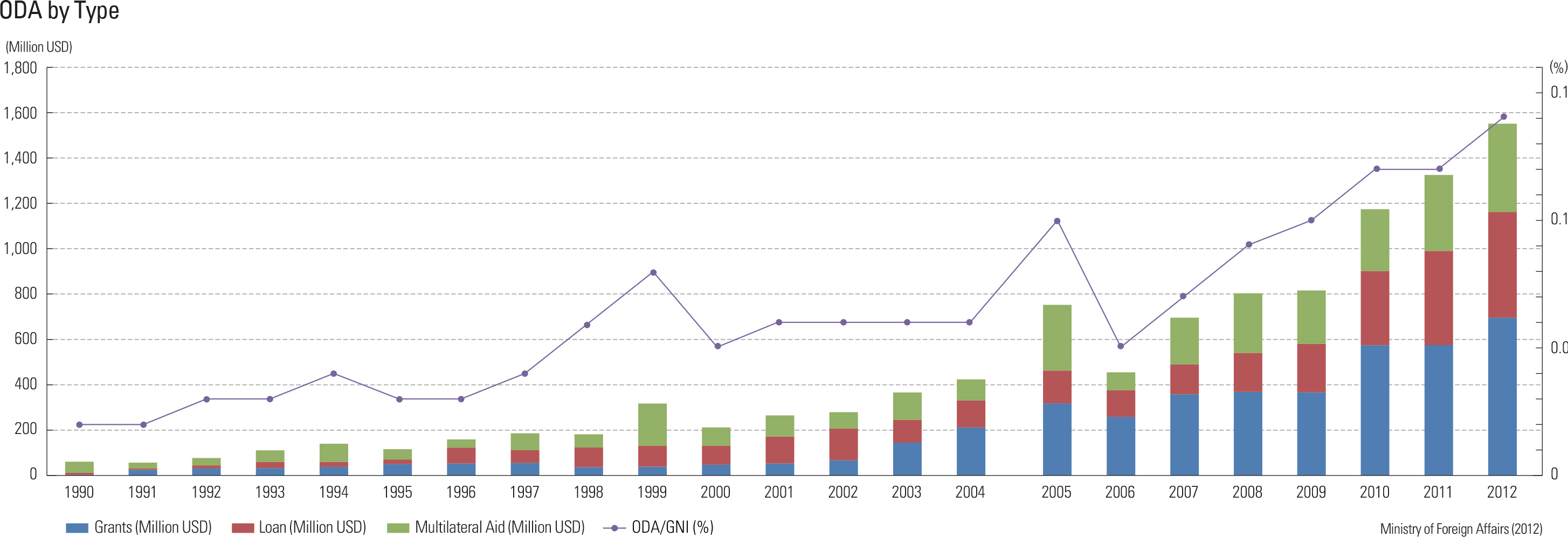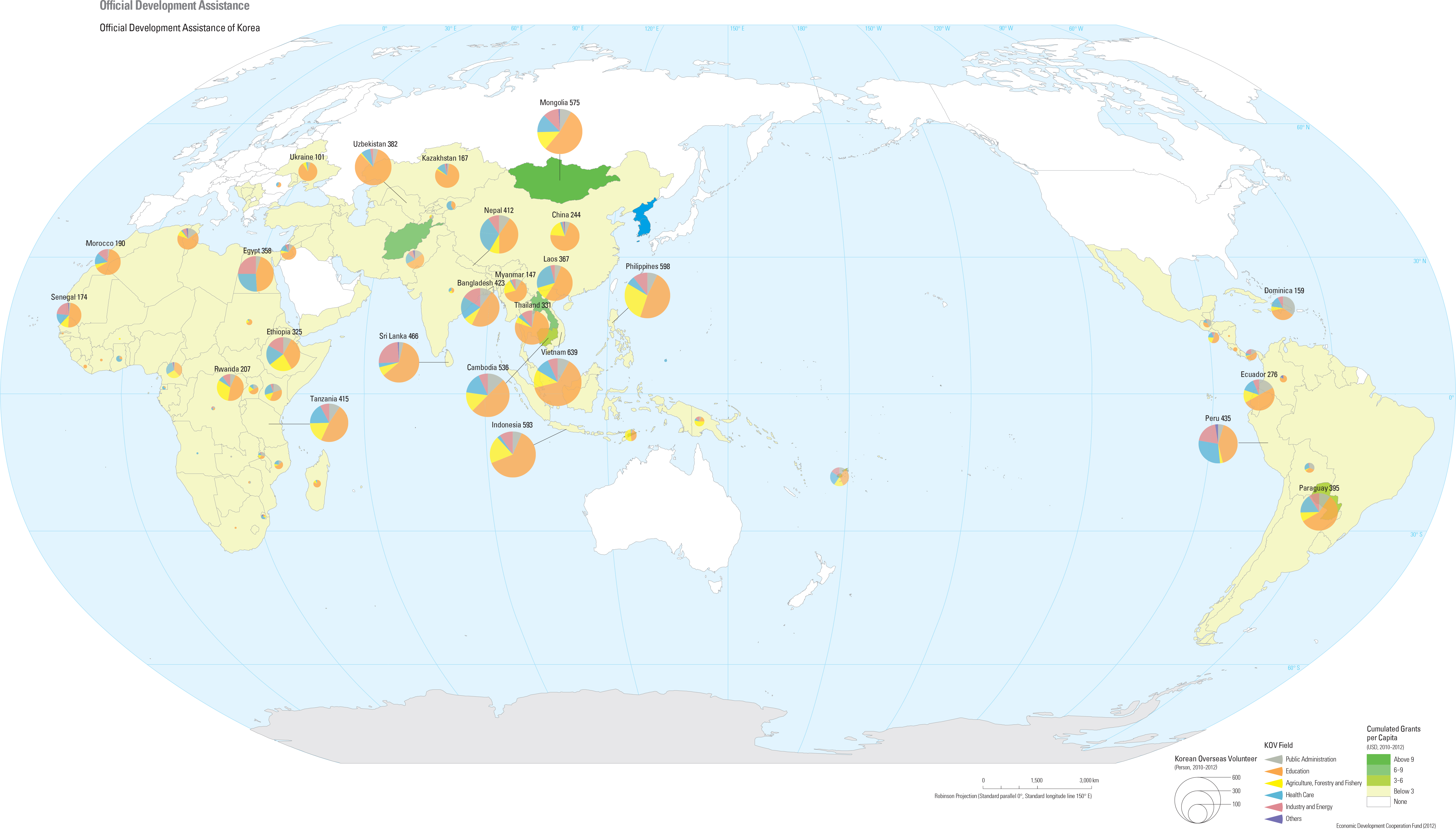As the international status of Korea continues to grow, the Korean government continues to play active roles on the world stage. Even though colonization and war pushed the nation to the periphery for the first half of the 20th century, Korea rapidly emerged from that prior devastation to distinguish itself as an economically stable democracy. One truly symbolic event that highlights Korea’s emergence in world affairs is the Seoul Olympic Games in 1988. Another benchmark accomplishment is Korea’s membership in the Organization for Economic Cooperation and Development (OECD) in 1996. More importantly, Korea’s development path is quite different from those of many other western countries, which may serve as a good role model for many of today’s developing countries.
Korea’s participation in international cooperation and development has been apparent since the late 1980s. The Korean government established the Economic Development Cooperation Fund (EDCF) in 1987 to offer international loans. In 1991, the Korea International Cooperation Agency (KOICA) was set up to provide grants and volunteers for a wide range of collaborative projects worldwide. Korea also joined the Development Assistance Committee (DAC) in the OECD in January 2010, signifying its role as an active donor for global development. Specifically, Korea’s official development assistance is both bilateral and multilateral. Korean Overseas Volunteers have been dispatched to many parts of the world. Thus far, Korea’s effort to provide international assistance has focused on these regions: Asia the Middle East, Eastern Europe, the Commonwealth of Independent States (CIS), Africa, and Latin America. The Official Development Assistance (ODA) of the Korean government provides grants or loans for promoting economic development and welfare of developing countries. Korea, as a member of the Development Assistance Committee (DAC) of the OECD, has provided grants and loans to many developing countries all around the world.
The map shows the cumulative amount of the Korea’s grants from 2010 to 2012, normalized by the population of the receiving country. It also shows the number of Korean overseas volunteers and the sector they are engaged within in each country. Many volunteers at present are involved in education, agriculture, fisheries, and public health.
The graph presents the ratio of ODA to Gross National Income (GNI). We can see that the ratio has increased continuously since 1990. An exceptionally high value is observed in 2005 due to the tsunami disaster in the South Asia. The ODA per capita shows how much an individual in the donor country pays for ODA. Even though it is still below DAC average of 31 USD, Korea has made continuous improvements in this type of assistance. The ODA may be classified into two categories: bilateral and multilateral. The bilateral assistance can be further divided into grants and loans. The graph shows that Korea has increased assistance in all types of ODA. In 2012, for instance, the amount of bilateral and multilateral ODA reached to 1,160 million and 390 million USD, respectively. It indicates that these were increased by 17.4% and 16.0% compared with the previous year, attesting to the fact that Korea has expanded its role as an active donor for global development.

